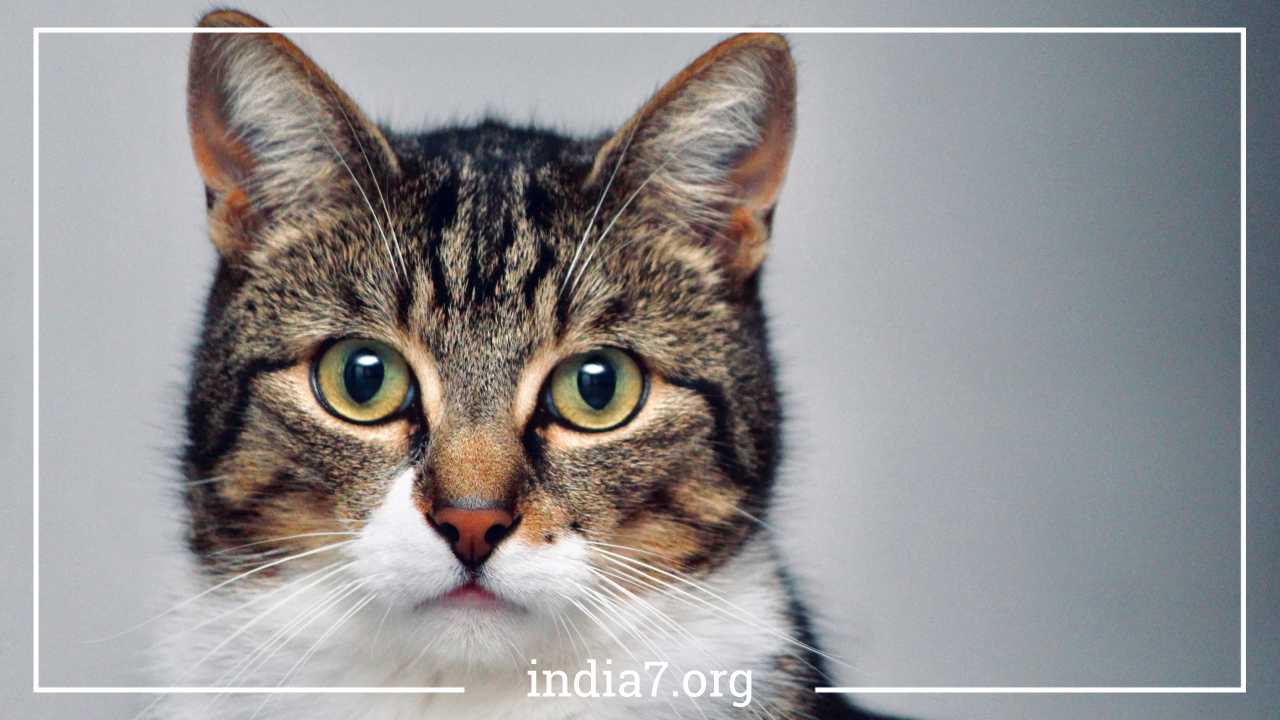Dealing With Cat Allergies: Causes, Symptoms, Treatment, and Prevention

Cat Allergies
Cats have earned their place as one of the most beloved and cherished pets worldwide. Their playful antics, endearing personalities, and the comfort they provide are just some of the reasons why millions of households in the United States and around the world welcome these feline friends into their lives. However, alongside this affection for cats comes a common issue that affects many cat owners: cat allergies.
In this comprehensive guide, we will delve into the various aspects of dealing with cat allergies, including their causes, symptoms, treatment options, and prevention strategies. Whether you are a lifelong cat lover or considering adopting a cat, understanding cat allergies is essential for ensuring a harmonious coexistence with these wonderful pets.
1: Understanding Cat Allergies
1.1 What Are Cat Allergies?
Cat allergies, medically known as allergic rhinitis or allergic asthma, are hypersensitive reactions of the immune system to allergens found in a cat’s body, such as dander, urine, and saliva. Allergens are substances that can trigger an allergic response in individuals with heightened sensitivities. In the case of cat allergies, the primary culprit is often cat dander.
1.2 Prevalence of Cat Allergies
Cat allergies are widespread, affecting a significant portion of the population. Statistics from the past have revealed that over 10 million people in the United States alone experience allergic reactions to cats. This prevalence highlights the importance of understanding and managing cat allergies for both current and potential cat owners.
1.3 Causes of Cat Allergies
The primary cause of cat allergies is cat dander, which consists of tiny dust particles produced by a cat’s body. Dander is essentially the flaky, shed skin that cats naturally release. Although dander can irritate the skin upon contact, it can also infiltrate the immune system, leading to various allergic symptoms and almost immediate allergic responses.
2: Cat Allergens and Their Sources
2.1 Cat Dander
Cat dander, as mentioned earlier, is the primary source of cat allergies. It is composed of tiny, often microscopic, flakes of skin shed by cats as a natural part of their growth and grooming process. These skin particles are incredibly lightweight and can remain suspended in the air for extended periods, making them easy to inhale.
2.2 Cat Urine
Cat urine contains allergens that can contribute to cat allergies. These allergens may become airborne when cleaning the litter box or as a result of a cat’s grooming habits. It’s essential to maintain good hygiene in the litter box area to minimize exposure to these allergens.
2.3 Cat Saliva
Cats groom themselves regularly, applying saliva to their fur during the process. While this self-grooming is a natural and healthy behavior, it can also lead to the spread of cat saliva and its associated allergens. As cats distribute saliva on their fur, they inadvertently disperse allergens throughout their environment.
2.4 Other Sources of Cat Allergens
Cat allergens can be found throughout a cat owner’s home, not just on the cat itself. Allergens may be present in bedding, carpets, upholstery, and even on clothing that has come into contact with cats. Understanding these various sources is crucial for effectively managing cat allergies.
3: Symptoms of Cat Allergies
3.1 Common Symptoms
Cat allergies can manifest in a range of symptoms, which may vary from person to person. Common symptoms include:
- Sneezing: Frequent or persistent sneezing is a hallmark symptom of cat allergies.
- Runny or Stuffy Nose: Many individuals with cat allergies experience a runny or congested nasal passage.
- Itchy or Watery Eyes: Allergens can irritate the eyes, leading to itching and excessive tearing.
- Coughing: Persistent coughing may occur as a result of allergen exposure.
- Wheezing and Shortness of Breath: Some individuals may experience wheezing or difficulty breathing, particularly those with pre-existing asthma.
- Skin Reactions: Skin may become itchy, red, or develop hives upon contact with cat allergens.
3.2 Variation in Symptoms
Different people react differently to cat allergens, meaning that some symptoms may not occur at all. It’s essential to recognize that individuals may have varying degrees of sensitivity to these allergens, which can influence the severity of their allergic reactions.
3.3 Rare Symptoms
While the symptoms mentioned above are common, some individuals with cat allergies may experience less common symptoms, including:
- Fever and Chills: Although rare, fever and chills can occur as part of an allergic reaction to cats. However, it’s important to note that these symptoms may also indicate other medical conditions, necessitating a thorough evaluation by a healthcare professional.
4: Diagnosis of Cat Allergies
4.1 Medical Evaluation
If you suspect that you or a family member has cat allergies, seeking a medical evaluation is crucial. A healthcare professional, typically an allergist or immunologist, can perform a thorough assessment to confirm the presence of cat allergies.
4.2 Allergy Testing
To diagnose cat allergies definitively, allergy testing may be conducted. Two common types of allergy tests include:
- Skin Prick Test: In this test, small amounts of cat allergens are applied to the skin, usually on the forearm or back. The skin is then pricked with a tiny needle to introduce the allergens into the body. If you are allergic to cats, you will likely develop a raised, itchy bump at the site of the prick within 15-20 minutes.
- Blood Test (Specific IgE Test): This blood test measures the levels of specific antibodies, known as immunoglobulin E (IgE), in response to cat allergens. Elevated IgE levels indicate an allergic reaction to cats.
4.3 Medical History
During the evaluation, the healthcare professional will also take a detailed medical history, including information about your symptoms, their duration and severity, and any potential triggers or environmental factors that exacerbate your symptoms. This information helps in formulating an accurate diagnosis and developing an appropriate treatment plan.
5: Treatment Options for Cat Allergies
5.1 Antihistamines
Antihistamines are a common first-line treatment for cat allergies. These medications work by blocking the action of histamines, which are chemicals released by the body during an allergic reaction. Histamines are responsible for many of the symptoms associated with allergies, such as sneezing, itching, and runny nose. Common over-the-counter antihistamines include cetirizine (Zyrtec), loratadine (Claritin), and fexofenadine (Allegra). In more severe cases, prescription-strength antihistamines may be recommended.
5.2 Decongestants
Decongestants are another option for relieving nasal congestion and related symptoms. These medications work by narrowing blood vessels in the nasal passages, reducing swelling and congestion. Decongestants are available in both oral and nasal spray forms. However, nasal spray decongestants should be used with caution, as prolonged use can lead to rebound congestion.
5.3 Nasal Corticosteroids
Nasal corticosteroids are prescription medications that help reduce inflammation in the nasal passages. They are effective in relieving nasal congestion, sneezing, and a runny nose. Unlike decongestant nasal sprays, nasal corticosteroids can be used long-term without the risk of rebound congestion.
5.4 Allergy Shots (Immunotherapy)
For individuals with severe and persistent cat allergies, allergen immunotherapy, commonly known as allergy shots, may be recommended. Allergy shots involve regular injections of a diluted cat allergen extract. Over time, these injections can desensitize the immune system to cat allergens, reducing allergic reactions. Allergy shots are typically administered under the guidance of an allergist and require a long-term commitment, often spanning several years.
5.5 Medications for Asthma
For individuals with both cat allergies and asthma, additional medications may be necessary to manage asthma symptoms. These may include bronchodilators to open the airways and inhaled corticosteroids to reduce airway inflammation. Managing asthma effectively is crucial, as allergen exposure can exacerbate asthma symptoms.
6: Prevention and Management Strategies
6.1 Reducing Allergen Exposure
One of the key strategies for managing cat allergies is minimizing exposure to cat allergens. Here are some practical steps to achieve this:
- Designate Cat-Free Zones: Create specific areas in your home where your cat is not allowed. This can include bedrooms and other areas where you spend a significant amount of time.
- Frequent Cleaning: Regularly clean and vacuum your home using a vacuum cleaner equipped with a HEPA (high-efficiency particulate air) filter. This helps remove allergens from carpets, upholstery, and floors.
- Air Purifiers: Consider using HEPA air purifiers in rooms where you spend the most time. These devices can help trap airborne allergens.
- Wash Bedding and Curtains: Wash your bedding, curtains, and other fabric items frequently in hot water to remove allergens.
- Cat Grooming: Brush and groom your cat regularly, ideally in an outdoor area, to minimize the spread of allergens. You can also explore hypoallergenic cat shampoos.
6.2 Allergen-Reducing Products
Several products designed to reduce allergen exposure are available on the market, including:
- Allergen-Proof Covers: These covers can be placed on pillows, mattresses, and duvets to prevent allergens from accumulating in bedding.
- HEPA Filters: Consider using HEPA filters in your HVAC system to trap allergens and prevent them from circulating in your home.
- Cat Litter: Opt for low-dust or hypoallergenic cat litters to minimize allergen exposure during litter box maintenance.
6.3 Medication Compliance
If your healthcare professional prescribes medications to manage cat allergies, it is crucial to adhere to the recommended dosage and usage instructions. Consistent use of antihistamines, decongestants, or other allergy medications can help control symptoms effectively.
6.4 Allergy Shots
For individuals with severe cat allergies, allergen immunotherapy (allergy shots) may be a valuable long-term solution. Discuss this option with your allergist to determine if it is suitable for your specific case.
7: Living with Cat Allergies
7.1 Coping Strategies
Living with cat allergies can be challenging, especially if you are deeply attached to your feline companion. Here are some coping strategies to help you navigate this situation:
- Maintain Open Communication: If you live with others, communicate openly about your allergies and work together to implement allergen-reduction strategies.
- Regular Check-Ups: Continue to consult with your healthcare professional to monitor your allergy symptoms and adjust your treatment plan as needed.
- Consider Hypoallergenic Breeds: If you are thinking of adopting a cat and have a history of allergies, explore hypoallergenic cat breeds. These breeds produce fewer allergens and may be a better fit for individuals with sensitivities.
- Consult with an Allergist: If you are considering getting a cat but have a history of allergies, consult with an allergist before making a decision. They can provide guidance and recommend allergy testing to assess your sensitivity to cat allergens.
8: When to Seek Medical Attention
8.1 Allergic Reactions vs. Other Health Conditions
It’s essential to distinguish between allergic reactions to cats and other health conditions that may present similar symptoms. While cat allergies can cause a range of symptoms, including sneezing, coughing, and itching, other medical conditions may share these symptoms. If you experience any of the following signs, it is crucial to seek immediate medical attention:
- Severe Difficulty Breathing: If you have difficulty breathing, wheezing, or chest tightness, it may indicate a severe allergic reaction or an asthma exacerbation.
- Swelling of the Face or Throat: Swelling of the face, lips, tongue, or throat can be a sign of a severe allergic reaction called anaphylaxis, which requires immediate medical intervention.
- Rapid Heartbeat: An unusually rapid heartbeat, also known as tachycardia, should be evaluated by a healthcare professional.
- Severe Skin Reactions: If you develop hives (raised, itchy welts) over a large area of your body or experience other severe skin reactions, seek medical attention.
8.2 Fever and Chills
While fever and chills are rare symptoms of cat allergies, they can occur in some cases. However, these symptoms may also indicate other medical conditions, such as infections or inflammatory disorders. If you develop fever and chills in conjunction with allergic symptoms, consult a healthcare professional for a comprehensive evaluation.
9: Final Remarks
Cat allergies can present challenges for cat owners, but with the right knowledge and strategies, they can be effectively managed. Understanding the causes, symptoms, treatment options, and prevention strategies for cat allergies is essential for maintaining a harmonious relationship with your feline friend while minimizing allergic reactions.
If you suspect that you or a family member has cat allergies, seek a medical evaluation from a healthcare professional or allergist. A proper diagnosis and tailored treatment plan can significantly improve your quality of life and allow you to continue enjoying the companionship of your beloved cat.
In closing, while cat allergies can be frustrating, they need not deter you from experiencing the joys of cat ownership. With proactive measures, effective treatments, and ongoing support from healthcare professionals, you can coexist with your cat in comfort and harmony. Cats are remarkable companions, and the love and joy they bring into our lives make the effort to manage allergies well worth it.



